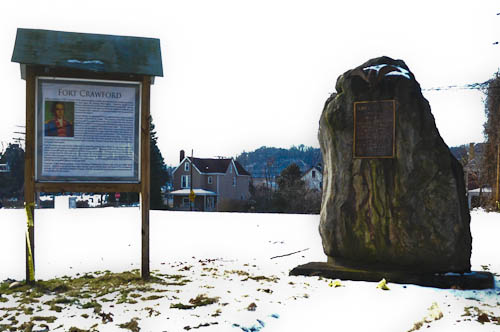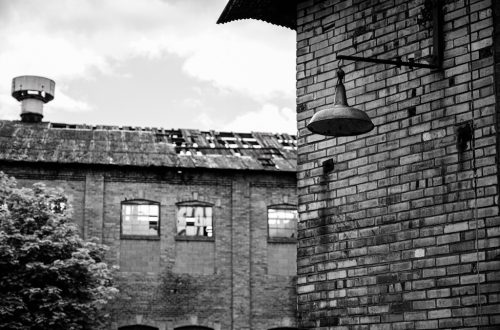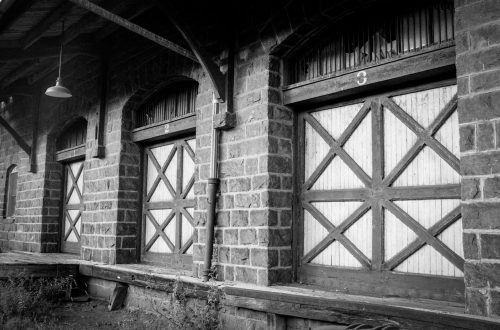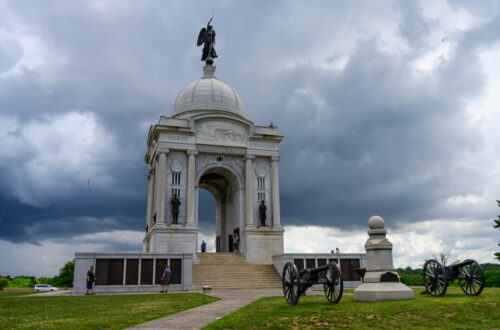The “Ghost” of Simon Girty
My Grandma Gaffron often joked that the ghost of Simon Girty hung around the Gaffron family property in North Huntingdon, Westmoreland County. “Simon Girty took my glasses,” she said when she couldn’t find them.
When I met and married Jonathan, I moved to Parnassus, New Kensington. A section of Parnassus sits on the ruins of the former Fort Crawford. Colonel William Crawford built the fort at the confluence of Puckety Creek and the Allegheny River in the mid-1700’s. In 1782, a force of Lenape and Wyandot Native Americans captured Colonel Crawford as he led the Crawford Expedition in Ohio. They tortured and executed Colonel Crawford the next day. Simon Girty was there.
Everything that I have read about Simon Girty left me more confused about him. He was taken prisoner and raised by Senecas after a violent raid on the family farm. He later worked as a trader and as an interpreter for the colonists. Per this article, he spoke Iroquois, Delaware, and Shawnee. In the novel “The Day Must Dawn” by Agnes Sligh Turnbull (I intend to blog more about that book this winter), Girty buys one of the fictional main characters a drink in a colonial Westmoreland County tavern. Girty then sees Colonel Crawford sitting at the other side of the bar, and proceeds to tell the main character of Girty’s dislike for Crawford as well as Girty’s own sympathy for the Native Americans. In the novel, Girty displays his resentment that Crawford outranks him in the colonial militia. Later in the novel, Girty defects from the colonials and aids the British Army after the Squaw Campaign in Ohio.
What role did Simon Girty play in Colonel Crawford’s execution? Depends on who you ask. By one eyewitness account, as Crawford burned to death at the stake, he begged Girty to shoot him. Girty responded that he had no gun, and then turned “to an Indian who was behind him, laughed heartily, and b (sic) all his gestures seemed delighted at the horrid scene.” In another version, Girty tried to convince the Native Americans not to execute Crawford, and they responded that he should stay out of it or he would join Crawford.
“Notorious,” “traitor,” and “misunderstood” are some of the words that accompany Simon Girty’s name in the articles and books written about him. He was born in central Pennsylvania (in the same county where I was born, by the way), but he died in Canada in 1818, so I even found his name listed in the Dictionary of Canadian Biography. He still has kin in Pennsylvania, who wish to clear his reputation. Here are some of the articles on Simon Girty and his involvement with Colonel Crawford:
http://old.post-gazette.com/regionstate/19991229girty4.asp
http://darkandbizaarestories.blogspot.com/2011/12/death-of-colwilliam-crawford.html
http://www.executedtoday.com/2012/06/11/1782-william-crawford-expedition-ohio/
http://www.ohiohistorycentral.org/w/Simon_Girty
http://franceshunter.wordpress.com/2009/11/18/william-clark-and-the-notorious-simon-girty/
http://en.wikipedia.org/wiki/Simon_Girty
After I moved to Parnassus, one of my neighbors entertained me with legends surrounding Fort Crawford. (We live within walking distance from the site of the old fort.) I lived here for years before I read “The Day Must Dawn” and realized that Simon Girty’s reputed foe Crawford was my neighborhood’s Crawford. Now that I have discovered the link between Parnassus, Colonel Crawford, and Simon Girty, I can tell my own stories about the “ghost” of Simon Girty.




2 Comments
Pingback:
Pingback: